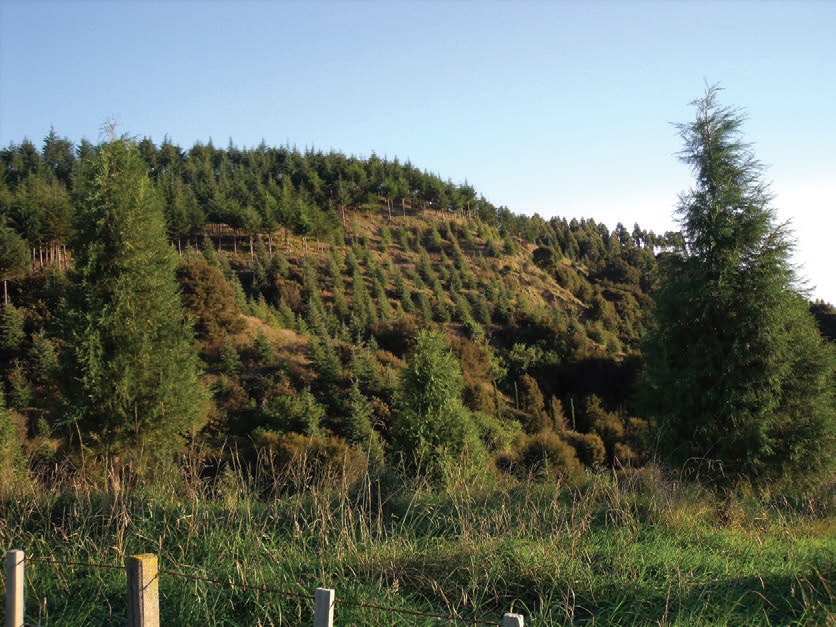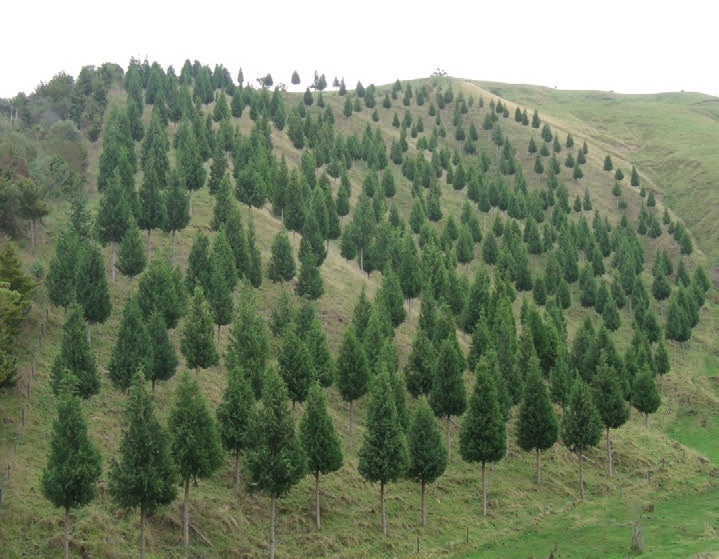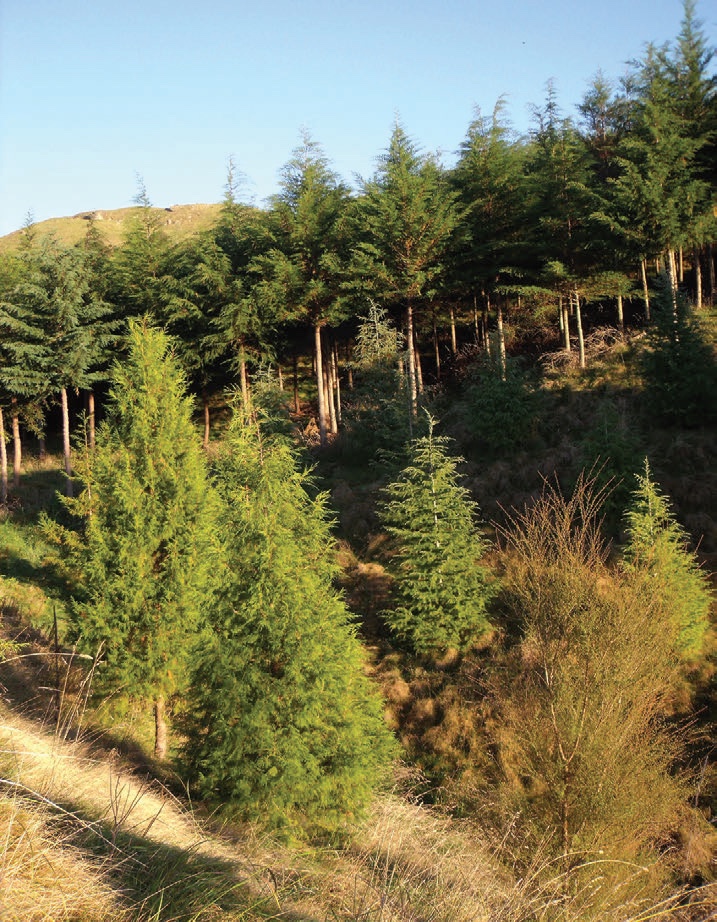Conifer timber species choices
Kevin Thomsen, New Zealand Tree Grower November 2011.
Recent Hawke’s Bay farm forestry field days and articles have discussed the merits, or otherwise, of conifer species choices compared to macrocarpa.
Firstly, let me be clear about macrocarpa. It has in the past been a good species to grow for timber and was used widely as a shelterbelt choice. The timber has been used and appreciated for its beauty and quality. Unfortunately this source is coming to an end. In most, if not all of Hawke’s Bay, macrocarpa is no longer a wise choice due to its susceptibility to serious canker infection.
It is therefore unfair to keep comparing macrocarpa timber with other conifer species which may be planted instead. Most of the macrocarpa milled recently is from old trees. Comparisons of timber from other cypress species is usually with trees under 30 years of age and this affects timber colour and quality.
There are numerous choices of trees which can be planted in sites where macrocarpa may have been used before. Comprehensive information on many suitable tree species can be obtained from the book Guide to successful farm forestry – A Hawke’s Bay perspective. Hawke’s Bay has variable soils and climate, and in the spring and summer period is often besieged by persistent dry-air winds. This is why tree siting and species choices are so important.
The site suitability of soil type, aspect, moisture along with the purpose of planting such as shelter, timber or shade need to be carefully considered. Then the species of tree can be chosen, not the other way around, as often happens.
A good alternative



The first alternative is Cupressus lusitanica which has potential for timber on medium to good quality sites. However, if given the opportunity it will produce large branches, so you need to keep the competition in place long enough to restrict vigorous branch growth. The edge trees will continue to be a problem and the foliage is always a risk for in-calf cows. It is not immune to canker infection, but the incidence is usually quite low.
From reports to date it appears that the timber is generally pale and any large knots create large timber defects. There are few older trees in Hawke’s Bay to provide a sound knowledge and experience of milling quality.
The planting numbers need to be high as there is a huge genetic variability and you will need plenty of selection choices. Around three to four years of age they are susceptible to wind-throw on moist sites, so it is a good idea to tip prune by cutting 50 per cent off large branches.
For the medium to poor quality sites C. torulosa is a good option. It will stand dry and cold and is fairly wind tolerant. In sites with better growing conditions it will produce heavier branches. If timber is a priority, siting or competition is important to keep branch size small. Not much is known about the timber quality of trees grown in New Zealand.
Other options
For choices other than cypress Cedrus deodara is ideally suited to poor quality sites where moisture deficit and wind exposure are a factor. It will tolerate dry, cold, wind and weed competition. This species is strongly apically dominant so can be planted at wider spacing on poorer sites. They are laborious trees to prune as branches are numerous and random, often with a large collar, and in open light conditions readily produce epicormic growth.The timber is used for decorative purposes and in these situations is naturally durable, retaining a pleasant scent. Only small quantities have been milled locally.
In the winter of 2008 I planted bare-rooted, well balanced plants in a gravel gully. When the extreme dry occurred and stress showed on the plants, I topped and trimmed back most of the branches. They hung in for the summer and then responded quickly with the autumn moisture. The species C. atlantica on the same site with the same treatment had a much higher mortality, but those that survived are now performing very well.
For higher altitudes you can consider Pseudotsuga menziesii but with good seed provenance it has the potential to grow well at lower altitudes as well if the site is not stressed for soil moisture. At Rissington for example, there are a few large trees near the river with their roots in alluvial soils fed with constant river moisture.
For moist soils in sheltered sites, species to consider are Cupressocyparis leylandii which requires similar conditions to lusitanica, and Sequoia sempervirens. Moist does not mean wet. For wet sites use swamp cypress, kahikatea or similar trees. Keep in mind the other indigenous options of totara, rimu and possibly kauri. Then there are all the non-conifer species to choose from, but that is another story.

 Farm Forestry New Zealand
Farm Forestry New Zealand